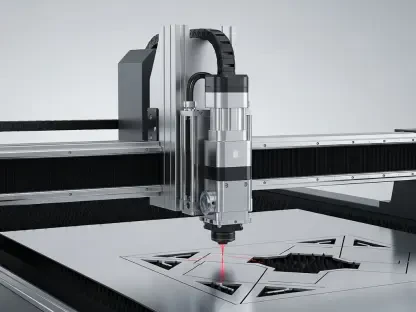New Zealand’s space industry has garnered attention worldwide for its significant achievements, particularly noteworthy for a country with relatively modest financial resources. Despite economic limitations, New Zealand’s aerospace sector has rapidly expanded, securing its place on the global stage. The remarkable growth becomes even more relevant within the context of the overall space industry, currently valued at $630 billion and projected to escalate to $1.8 trillion by the end of the decade. The commercial sector, which constitutes nearly 78% of this meteoric rise, plays a crucial role in shaping the future of space exploration and innovation.
Unique Geographic and Engineering Advantages
New Zealand’s strategic advantage lies not only in its pioneering spirit but also in its beneficial geographic location and proficient engineering skills. The country’s expertise in carbon fiber composites and aerodynamics, honed by its success in yacht racing, contributes significantly to its aerospace capabilities. The favorable geographic placement offers optimal launch conditions and reduced congestion compared to other global hotspots. Additionally, New Zealand’s regulatory framework is trusted and well-regulated, facilitating partnerships and fostering international trust. Crucial agreements with influential organizations, including NASA and the US Department of Defense, have further strengthened New Zealand’s position in the aerospace sector.
Geographic Benefits and Engineering Expertise
New Zealand’s geographic location provides distinct advantages for satellite launches, particularly those requiring specific orbital paths. Its relative isolation from heavily trafficked airspace ensures minimal interruptions and optimal launch conditions. Furthermore, New Zealand’s engineers have applied their knowledge from yacht racing to aerospace, particularly in the use of advanced carbon fiber composites. These materials, combined with expertise in aerodynamics, have transformed New Zealand into a hub for cutting-edge aerospace technology. The collaboration between academia, industry, and government entities has fostered innovation and development, setting the stage for New Zealand’s continued excellence in space exploration.
Regulatory Framework and Strategic Partnerships
One of the prime factors contributing to New Zealand’s ascent in the global aerospace sector is its trusted and well-regulated framework. The country has demonstrated transparency, reliability, and innovation in its regulatory processes, fostering a conducive environment for aerospace endeavors. Additionally, New Zealand’s government has successfully negotiated pivotal agreements with key players like NASA and the US Department of Defense. These alliances not only validate New Zealand’s capabilities but also open doors to collaborative ventures, technological exchanges, and resource sharing. Strategic partnerships have undoubtedly played a vital role in propelling New Zealand’s aerospace sector forward, exemplifying the country’s adeptness in carving out a niche in the competitive global market.
Key Players in New Zealand’s Aerospace Sector
The success of New Zealand’s space industry can be attributed largely to the pioneering efforts of two leading companies: Rocket Lab and Dawn Aerospace. Each firm showcases unique strengths and approaches that have collectively contributed to the national and global aerospace landscape.
Rocket Lab: Pioneering Small Satellite Launches
Founded by Sir Peter Beck, Rocket Lab has established itself as the premier provider of small satellite launches, primarily through its Electron rocket. Constructed from advanced carbon composites, the Electron rocket exemplifies technological innovation, offering reliability and cost-efficiency for launching commercial and scientific payloads. Rocket Lab’s financial performance is equally impressive, generating over $100 million per quarter, showcasing its operational success and business acumen. Their upcoming project, the Neutron rocket, aims to compete with some of the largest rockets globally, further cementing Rocket Lab’s status as a key player in the space industry.
Dawn Aerospace: Revolutionizing Space Access
Based in the South Island, Dawn Aerospace champions a distinct approach by focusing on spaceplanes and non-toxic propulsion systems for satellites. The Mk-II Aurora spaceplane represents a significant leap in technology, offering frequent and low-cost space access from conventional runways. This innovation allows for rapid turnaround and enhances operational flexibility, essential for both commercial and government applications. Dawn Aerospace is also noted for its green propulsion systems, widely adopted for their environmentally friendly nature and efficacy. These systems reflect Dawn’s commitment to sustainable space exploration and innovation, signifying a pivotal shift in propulsion technology.
Emerging Trends and Themes
New Zealand’s advancements in the aerospace arena emphasize several key trends and themes. Leveraging national strengths is paramount, with the country’s unique geographic location, engineering expertise, and regulatory credibility forming the backbone of its aerospace success. Additionally, New Zealand’s ability to carve out specialized niches, rather than competing directly with industry giants, has proven to be a strategic move. Sustained investment in research and development ensures continuous innovation, while strategic alliances with global stakeholders underscore the importance of international cooperation. These trends collectively highlight New Zealand’s effective approach to establishing itself as a formidable contender in the space industry.
National Strengths and Specialized Niches
New Zealand’s strategy of leveraging its national strengths is apparent in its focus on specialized niches within the industry. By capitalizing on unique geographic and engineering advantages, the country has carved out a distinct identity that differs from other major players. This approach ensures resilience and adaptability in a rapidly evolving sector. Specialized niches, such as small satellite launches and reusable spaceplanes, allow New Zealand to maintain a competitive edge without directly confronting established giants. This strategy highlights the importance of innovation and differentiation, positioning New Zealand favorably within the global aerospace landscape.
Research, Development, and International Alliances
Investment in sustained research and development remains a cornerstone of New Zealand’s aerospace success. Continuous innovation, driven by collaboration across academia, industry, and governmental bodies, ensures a steady stream of technological advancements. Furthermore, building strategic alliances with global stakeholders enhances New Zealand’s position within the international arena. These partnerships facilitate resource sharing, joint ventures, and technological exchanges, integral to the country’s continued growth. The symbiotic relationship between local expertise and international cooperation underscores New Zealand’s comprehensive approach to thriving in the competitive global aerospace sector.
Looking Ahead: New Zealand’s Future in Aerospace
New Zealand’s remarkable journey in the space industry serves as a compelling narrative of how smaller, underfunded operators can significantly impact the global stage. The focused vision and unwavering passion driving New Zealand’s aerospace endeavors illustrate the importance of capitalizing on national strengths. Furthermore, fostering innovation through sustained R&D and forming robust international partnerships remains essential for continued success. As New Zealand continues to navigate the intricacies of the aerospace sector, its proven strategies provide valuable lessons for other emerging players in the industry. Future considerations and actionable next steps will revolve around maintaining strategic alliances, enhancing technological innovation, and continually adapting to the dynamic global landscape.
Strategic Vision and Continued Innovation
The journey forward for New Zealand’s aerospace industry hinges on maintaining its strategic vision and commitment to innovation. The lessons learned from leveraging geographic and engineering strengths, carving out specialized niches, and building reliable international alliances will continue to guide its trajectory. By prioritizing sustained investment in research and development, New Zealand ensures a steady stream of cutting-edge technologies that bolster its competitive edge. As emerging trends shape the future of aerospace, New Zealand’s approach serves as a model for sustained success through focused vision and relentless pursuit of innovation.
Forming Robust International Partnerships
New Zealand’s space industry has gained worldwide recognition for its impressive achievements, especially given the country’s limited financial resources. Despite economic constraints, New Zealand’s aerospace sector has swiftly grown, securing a spot on the global stage. This growth is particularly impressive within the broader context of the space industry, currently valued at $630 billion and expected to surge to $1.8 trillion by the decade’s end. Nearly 78% of this significant expansion is driven by the commercial sector, which plays a pivotal role in shaping the future of space exploration and innovation. New Zealand has shown that even smaller nations can make substantial contributions to space technology, positioning itself as a noteworthy player in this rapidly advancing field. The country’s success illustrates how strategic investments and innovative approaches can yield remarkable results, emphasizing its potential to continue influencing the global space industry despite economic limitations.









